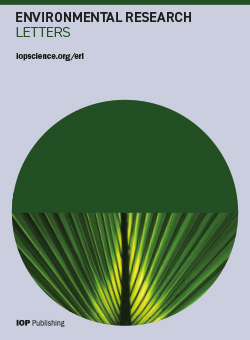Central America’s agro-ecological suitability for cultivating coca, Erythroxylum spp
IF 5.6
2区 环境科学与生态学
Q1 ENVIRONMENTAL SCIENCES
引用次数: 0
Abstract
We assess how much of Central America is likely to be agriculturally suitable for cultivating coca (Erythroxylum spp), the main ingredient in cocaine. Since 2017, organized criminal groups (not smallholders) have been establishing coca plantations in Central America for cocaine production. This has broken South America’s long monopoly on coca leaf production for the global cocaine trade and raised concerns about future expansion in the isthmus. Yet it is not clear how much of Central America has suitable biophysical characteristics for a crop domesticated in, and long associated with the Andean region. We combine geo-located data from coca cultivation locations in Colombia with reported coca sites in Central America to model the soil, climate, and topography of Central American landscapes that might be suitable for coca production under standard management practices. We find that 47% of northern Central America (Honduras, Guatemala, and Belize) has biophysical characteristics that appear highly suitable for coca-growing, while most of southern Central America does not. Biophysical factors, then, are unlikely to constrain coca’s spread in northern Central America. Whether or not the crop is more widely planted will depend on complex and multi-scalar social, economic, and political factors. Among them is whether Central American countries and their allies will continue to prioritize militarized approaches to the drug trade through coca eradication and drug interdiction, which are likely to induce further expansion, not contain it. Novel approaches to the drug trade will be required to avert this outcome.中美洲在农业生态方面是否适合种植古柯(Erythroxylum spp)?
我们评估了中美洲有多少地区在农业上可能适合种植可卡因的主要成分古柯(Erythroxylum spp)。自 2017 年以来,有组织犯罪集团(而非小农户)一直在中美洲建立古柯种植园,用于生产可卡因。这打破了南美洲长期垄断全球可卡因贸易的古柯叶生产的局面,并引发了对地峡地区未来扩张的担忧。然而,中美洲有多少地区的生物物理特征适合这种在安第斯地区驯化并长期与该地区相关的作物,这一点尚不清楚。我们将哥伦比亚古柯种植地的地理定位数据与中美洲报告的古柯种植地数据相结合,建立了中美洲土壤、气候和地形的模型,这些地形在标准管理方法下可能适合古柯生产。我们发现,中美洲北部(洪都拉斯、危地马拉和伯利兹)47% 的地区具有非常适合种植古柯的生物物理特征,而中美洲南部的大部分地区则不适合种植古柯。因此,生物物理因素不太可能限制古柯在中美洲北部的蔓延。古柯作物是否得到更广泛的种植将取决于复杂而多层面的社会、经济和政治因素。其中包括中美洲国家及其盟国是否会继续优先考虑通过铲除古柯和拦截毒品的军事化方式来解决毒品贸易问题,这很可能会诱发而非遏制毒品贸易的进一步扩张。要避免出现这种结果,就必须采取新的方法来解决毒品贸易问题。
本文章由计算机程序翻译,如有差异,请以英文原文为准。
求助全文
约1分钟内获得全文
求助全文
来源期刊

Environmental Research Letters
环境科学-环境科学
CiteScore
11.90
自引率
4.50%
发文量
763
审稿时长
4.3 months
期刊介绍:
Environmental Research Letters (ERL) is a high-impact, open-access journal intended to be the meeting place of the research and policy communities concerned with environmental change and management.
The journal''s coverage reflects the increasingly interdisciplinary nature of environmental science, recognizing the wide-ranging contributions to the development of methods, tools and evaluation strategies relevant to the field. Submissions from across all components of the Earth system, i.e. land, atmosphere, cryosphere, biosphere and hydrosphere, and exchanges between these components are welcome.
 求助内容:
求助内容: 应助结果提醒方式:
应助结果提醒方式:


